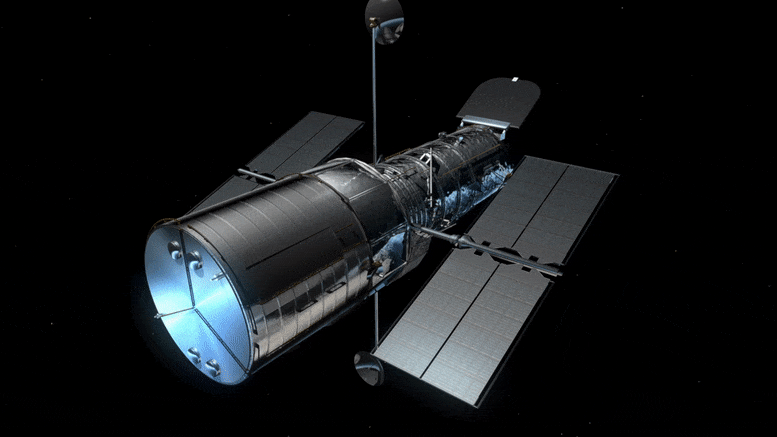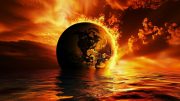
The Hubble Space Telescope was launched into orbit by space shuttle Discovery on April 24, 1990. Hubble orbits about 547 kilometers (340 miles) above Earth. It is the length of a large school bus and weighs as much as two adult elephants. Hubble travels about 5 miles per second: That is like traveling from the eastern coast of the United States to the western coast in 10 minutes. Hubble is solar-powered. Credit: ESA/Hubble (M. Kornmesser)
The universe is a wild and wonderful place. Hubble has shown us that the cosmos is more colorful and often stranger than we ever could have imagined.
Video Transcript:
When we look up at the night sky, we can only see a small percentage of the stars that are around us. That’s because our eyes can only see so far.
Telescopes on Earth have helped us get a better view of the stars by collecting more light than our eyes can see allowing us to see even further.
But the view from those telescopes gets distorted by Earth’s atmosphere. That’s why we see the stars twinkle.
To get rid of the distortion of the atmosphere, astronomers imagine building a telescope the size of a school bus to go into space.
The result was the Hubble Space Telescope launched in 1990.
Today it orbits the Earth, 340 miles (550 kilometers)above the surface.
Many of the galaxies Hubble photographs are millions of light-years away from Earth.
Light-years are a measurement for distance in space, related to the time it takes light to travel from one place to another. A light-year is the distance light travels in one year.
Hubble photographed the Whirlpool Galaxy that is 25 million light-years away from Earth.
The light from that Galaxy took 25 million years to travel to Earth. This means that the light Hubble sees from the Whirlpool Galaxy, is 25 million years old.
We aren’t seeing the Galaxy as it exists today. We’re seeing the Galaxy as it existed 25 million years ago.
A Hubble astronomer had a really interesting idea to point Hubble at an apparently blank spot of sky to see what we could see.
That empty patch of sky turned out to be filled with galaxies, much more distant than we’d ever seen before.
Some of the galaxies were baby galaxies, were baby galaxies born just after the creation of the universe and the Big Bang.
The universe is a never-ending source of wonder largely because of the things the Hubble Space Telescope has taught us during its years in space.
Hubble studies our own solar system, like storms on Mars, the rings of Saturn, and aurora on Jupiter.
Hubble also photographs the birth and death of stars, and has uncovered thousands of new galaxies in the universe.









Be the first to comment on "5 Things: Hubble Space Telescope – The Cosmos Is Often Stranger Than We Could Imagine [Video]"